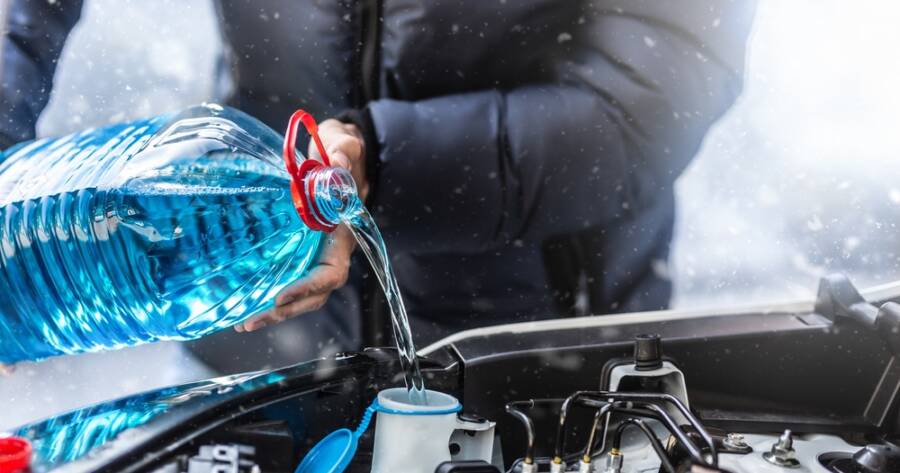As temperatures drop and the busy holiday season approaches, preparing your vehicle becomes increasingly important. Cold weather stresses batteries, tires, and fluids, while road salt and debris can accelerate wear. Taking time to check essential systems, replace worn parts, and update emergency supplies helps ensure safer, more reliable winter driving. By addressing maintenance before the new year begins, drivers can avoid unexpected problems and start the season with greater confidence.
Check and Replace Your Tires
Winter roads demand more from your tires, especially in areas with snow or ice. Begin by checking the tread depth—worn tires lose traction easily and can be unsafe in slippery conditions. Use the “coin test” to ensure your tires still have enough tread.
If you live in a region with heavy snow, consider switching to winter tires. These are designed to provide better grip in cold temperatures. Also, make sure to check tire pressure regularly, as air contracts in the cold, which can lead to underinflated tires. Proper tire pressure improves fuel efficiency and handling.
Inspect and Top Off Fluids
Fluids play a vital role in keeping your car running efficiently, especially during winter. Check your engine oil and make sure it’s at the recommended level. If your next oil change is due soon, consider using a winter-grade oil that performs better in cold weather.
Don’t forget about the coolant, also known as antifreeze. This fluid prevents the engine from freezing in low temperatures. Make sure the coolant mix is correct (usually a 50/50 mix of water and antifreeze) and top it off if needed.
Finally, check the windshield washer fluid. Use a winter-specific formula that won’t freeze on your windshield. Having clear visibility is crucial during snowy or icy conditions.
Test Your Battery
Cold weather can weaken your car battery, making it harder to start your engine. Before winter fully sets in, test your battery to ensure it’s holding a charge. Many auto parts stores offer no-fee battery testing.
If your battery is more than three years old, consider replacing it to avoid being stranded on a freezing morning. Also, inspect the battery terminals for corrosion and clean them if necessary. A healthy battery is key to reliable winter driving.
Prepare a Winter Emergency Kit
Even with proper maintenance, emergencies can still happen, so it’s important to be prepared. A well-stocked winter emergency kit can make all the difference if you’re stuck in bad weather.
Your kit should include a flashlight, blankets, gloves, and a first-aid kit. Add items like jumper cables, a small shovel, and traction aids such as sand or kitty litter. Don’t forget to include a phone charger and extra water bottles.
Having these supplies on hand will give you peace of mind and keep you safe if the unexpected happens.
Protect Your Car’s Exterior
Winter conditions can wreak havoc on your car’s exterior, with road salt and grime causing corrosion over time. To protect your paint, give your vehicle a thorough wash and apply a good-quality wax before the snow starts falling. Wax creates a barrier against salt and moisture, reducing the risk of rust. Don’t forget to clean underneath your car, as salt often collects there and accelerates damage.
For extra protection, consider applying a paint sealant or rust-proofing treatment. These measures can help maintain your car’s value and appearance throughout the winter months. Regularly rinsing your car during winter, especially after driving on salted roads, will further minimize damage.
Check Your Heating System and Defroster
A properly functioning heating system and defroster are essential for comfortable and safe winter driving. Test the car’s heater to ensure it warms the cabin efficiently, as poor heating could indicate a problem with the thermostat or coolant levels.
Equally important is the defroster, which keeps your windshield clear. If the defroster isn’t working properly, it could be due to a blocked vent, low coolant levels, or a malfunctioning blower fan. Addressing these issues early ensures you’ll have clear visibility and a warm, safe ride all winter long.
Inspect Wipers and Lights
Visibility is crucial for safe winter driving, especially during snowstorms or on foggy mornings. Start by checking your windshield wipers for any signs of wear or damage. If they leave streaks or don’t clean the glass properly, replace them with heavy-duty winter wipers designed to handle ice and snow.
Next, inspect all exterior lights, including headlights, brake lights, and turn signals. Clean them to remove dirt or grime that might reduce their brightness. Replace any burned-out bulbs so other drivers can see you clearly on dark winter roads.
Learn More Today
Getting your car ready for winter doesn’t have to be difficult, but it does require attention to detail. From tires to fluids and emergency kits, each step ensures your safety and your vehicle’s performance in cold weather.
By taking these precautions now, you can enjoy worry-free driving throughout the winter season and beyond. Keep your car in top shape and start the new year with confidence!




